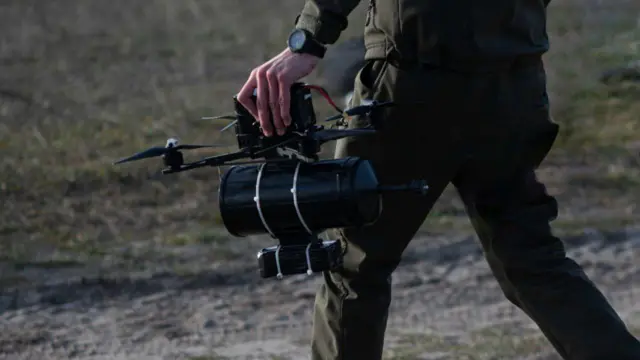Frontline vs. drones: border guards of Ukraine share how to neutralize fiber-optic UAVs

Fighters from the “Steel Border” brigade are sharing their experience in countering the enemy’s use of fiber-optic FPV drones. According to them, such devices are less vulnerable to electronic warfare systems but are at the same time heavier and less maneuverable, which gives Ukrainian troops certain tactical advantages.
They are used for reconnaissance and precision strikes, posing a serious threat to Ukrainian infantry and armored vehicles. This makes developing effective countermeasures a vital part of Ukraine’s defense effort.
The commander of an intelligence unit with the callsign Veduchyi, serving in the reconnaissance Askold detachment, explained:
UAV operations are a coordinated team effort, where the speed of information exchange and coordination save lives. Border guards said they employ various methods to neutralize fiber-optic copters; sometimes simple tools or accurate fire are enough to disable the device. The report even mentions a case where a drone was destroyed after its fiber cable was cut with scissors.
They also emphasized the difference between mass-produced Russian drones, which come with fixed reels and built-in cameras, and Ukrainian drones, which are modular and can be adapted for specific missions. Because of these differences, Ukrainian units adjust their tactics for using UAVs in urban areas and during clearance operations.
An example from the 225th Separate Assault Regiment describes a method where a fiber-optic FPV drone flies ahead of the infantry to check buildings, significantly reducing risks for assault groups: if the enemy is detected, the drone marks the target and the infantry advance along a safer route. Commanders describe this approach as both safer and more effective in urban combat.